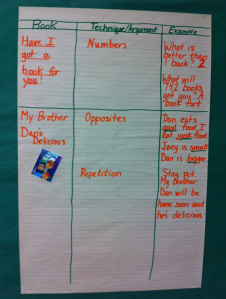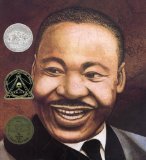Dawn Little's Blog, page 14
March 26, 2012
Amelia Writes Again by Marissa Moss
Recommended Grades: 3-5
In this sequel to Amelia's Notebook , can Amelia keep her friend and her secrets at the same time?
, can Amelia keep her friend and her secrets at the same time?
Lesson Idea:
Writers Workshop
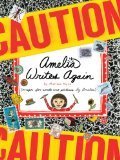

Writers' Notebooks: Read aloud Amelia's Notebook and Amelia Writes Again
and Amelia Writes Again . Discuss how Amelia uses her notebooks to write thoughts, paste pictures, and other items. Provide notebooks for students to create their own writers' notebooks. Use Amelia's Notebook and Amelia Writes Again
. Discuss how Amelia uses her notebooks to write thoughts, paste pictures, and other items. Provide notebooks for students to create their own writers' notebooks. Use Amelia's Notebook and Amelia Writes Again as models. Encourage students to use their notebooks to keep "seeds" in for writing. Inspiration can come from anywhere!
as models. Encourage students to use their notebooks to keep "seeds" in for writing. Inspiration can come from anywhere!
©2012 by Dawn Little for Picture This! Teaching with Picture Books. All Amazon links are affiliate links and may result in my receiving a small commission. This is at no additional cost to you.
Filed under: Amelia's Notebook, teaching with picture books, writer's notebooks, writers workshop Tagged: Amelia Writes Again, Amelia's Notebook, writer's notebooks, writers workshop








March 19, 2012
Tuesday by David Wiesner
Recommended Grades: 3-5
A nearly wordless picture book depicting how frogs behave one Tuesday night.
Lesson Idea:
Comprehension Strategies


Making Inferences: Read aloud the first half of Tuesday . As you read aloud, model how to make inferences by inferring what the frogs are doing on this Tuesday night. Explain what an inference is and how they help us understand what we read. Create a t-chart that has two columns (What the picture shows/Inference). As you read aloud, model how to fill out the t-chart. After reading aloud the first half, provide an opportunity for students to work with partners to complete the second half with a t-chart.
. As you read aloud, model how to make inferences by inferring what the frogs are doing on this Tuesday night. Explain what an inference is and how they help us understand what we read. Create a t-chart that has two columns (What the picture shows/Inference). As you read aloud, model how to fill out the t-chart. After reading aloud the first half, provide an opportunity for students to work with partners to complete the second half with a t-chart.
©2012 by Dawn Little for Picture This! Teaching with Picture Books. All Amazon links are affiliate links and may result in my receiving a small commission. This is at no additional cost to you.
Filed under: comprehension strategies, making inferences, teaching with picture books, wordless picture books Tagged: comprehension strategies, making inferences, Tuesday by David Weisner, wordless picture books








March 12, 2012
Don’t Let the Pigeon Drive the Bus by Mo Willems
Recommended Grades: 2-5
As the story begins, the bus driver leaves the bus, but implores the reader to keep the Pigeon from driving the bus. The Pigeon pulls out all the stops to get the reader to allow him to drive the bus. Do his techniques work?
Lesson Idea:
Writers Workshop
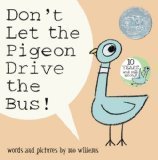

Mentor Texts/Persuasion: As an introduction to a persuasive writing unit, have students create a list of things they can convince a friend to do. Read aloud Don’t Let the Pigeon Drive the Bus! and discuss the ways the Pigeon tried to convince the reader to allow him to drive the bus. Ask students to create a humorous book convincing someone to do something from their list.
and discuss the ways the Pigeon tried to convince the reader to allow him to drive the bus. Ask students to create a humorous book convincing someone to do something from their list.
Note: Created in collaboration with our third grade team
©2012 by Dawn Little for Picture This! Teaching with Picture Books. All Amazon links are affiliate links and may result in my receiving a small commission. This is at no additional cost to you.
Filed under: Don't Let the Pigeon Drive the Bus, Persuasive writing, teaching with picture books Tagged: Don't Let the Pigeon Drive the Bus!, persuasive writing








Don't Let the Pigeon Drive the Bus by Mo Willems
Recommended Grades: 2-5
As the story begins, the bus driver leaves the bus, but implores the reader to keep the Pigeon from driving the bus. The Pigeon pulls out all the stops to get the reader to allow him to drive the bus. Do his techniques work?
Lesson Idea:
Writers Workshop


Mentor Texts/Persuasion: As an introduction to a persuasive writing unit, have students create a list of things they can convince a friend to do. Read aloud Don't Let the Pigeon Drive the Bus! and discuss the ways the Pigeon tried to convince the reader to allow him to drive the bus. Ask students to create a humorous book convincing someone to do something from their list.
and discuss the ways the Pigeon tried to convince the reader to allow him to drive the bus. Ask students to create a humorous book convincing someone to do something from their list.
Note: Created in collaboration with our third grade team
©2012 by Dawn Little for Picture This! Teaching with Picture Books. All Amazon links are affiliate links and may result in my receiving a small commission. This is at no additional cost to you.
Filed under: Don't Let the Pigeon Drive the Bus, Persuasive writing, teaching with picture books Tagged: Don't Let the Pigeon Drive the Bus!, persuasive writing








March 5, 2012
My Brother Dan’s Delicious by Steven Layne
Recommended Grades: 2-5
Third grader, Joey, is left home alone. And what happens when you are left home alone? Your imagination gets the best of you and sometimes “monsters” visit. When Joey’s imagination gets the best of him, he figures out exactly what he would say if a monster wants to eat him, “My brother Dan is delicious.”
Lesson Idea:
Writers Workshop
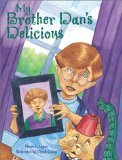

Mentor Texts: Read aloud My Brother Dan’s Delicious as part of a unit on the techniques of persuasion. Discuss the techniques of persuasion (opposites, statistics (numbers), and repetition) and how they are evident in My Brother Dan’s Delicious
as part of a unit on the techniques of persuasion. Discuss the techniques of persuasion (opposites, statistics (numbers), and repetition) and how they are evident in My Brother Dan’s Delicious Create an anchor chart that labels the techniques of persuasion. Post the chart so students may use it as a model when writing their own persuasive piece (the example below is the second poster of 2).
Create an anchor chart that labels the techniques of persuasion. Post the chart so students may use it as a model when writing their own persuasive piece (the example below is the second poster of 2).
Note: Other books you may want to include in a unit on the techniques of persuasion: A Pig Parade is a Terrible Idea and Have I Got a Book for You!
©2012 by Dawn Little for Picture This! Teaching with Picture Books. All Amazon links are affiliate links and may result in my receiving a small commission. This is at no additional cost to you.
Filed under: anchor charts, My Brother Dan's Delicious, Persuasive writing, teaching with picture books, writers workshop Tagged: anchor charts, My Brother Dan's Delicious, persuasive writing, writers workshop








My Brother Dan's Delicious by Steven Layne
Recommended Grades: 2-5
Third grader, Joey, is left home alone. And what happens when you are left home alone? Your imagination gets the best of you and sometimes "monsters" visit. When Joey's imagination gets the best of him, he figures out exactly what he would say if a monster wants to eat him, "My brother Dan is delicious."
Lesson Idea:
Writers Workshop


Mentor Texts: Read aloud My Brother Dan's Delicious as part of a unit on the techniques of persuasion. Discuss the techniques of persuasion (opposites, statistics (numbers), and repetition) and how they are evident in My Brother Dan's Delicious
as part of a unit on the techniques of persuasion. Discuss the techniques of persuasion (opposites, statistics (numbers), and repetition) and how they are evident in My Brother Dan's Delicious Create an anchor chart that labels the techniques of persuasion. Post the chart so students may use it as a model when writing their own persuasive piece (the example below is the second poster of 2).
Create an anchor chart that labels the techniques of persuasion. Post the chart so students may use it as a model when writing their own persuasive piece (the example below is the second poster of 2).
Note: Other books you may want to include in a unit on the techniques of persuasion: A Pig Parade is a Terrible Idea and Have I Got a Book for You!
©2012 by Dawn Little for Picture This! Teaching with Picture Books. All Amazon links are affiliate links and may result in my receiving a small commission. This is at no additional cost to you.
Filed under: anchor charts, My Brother Dan's Delicious, Persuasive writing, teaching with picture books, writers workshop Tagged: anchor charts, My Brother Dan's Delicious, persuasive writing, writers workshop








February 27, 2012
Freedom Song: The Story of Henry “Box” Brown by Sally M. Walker
Recommended Grades: 4-6
Henry “Box” Brown was a slave in the 1800’s on a plantation near Richmond, Va. Song was an important part of his life and he sang for all aspects of it. When Henry’s wife and children were sold to another master, Henry’s song stopped. And in the silence, he thought of an ingenious way to escape slavery and find freedom.
Lesson Idea:
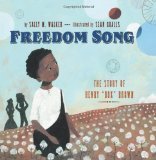

Mentor Texts: Read aloud Freedom Song: The Story of Henry “Box” Brown in conjunction with Henry’s Freedom Box when discussing the Underground Railroad or the Civil War. Why did Henry’s plan work? Did others try after him? Why was music an important influence in the lives of slaves? Discuss these questions and encourage students to research to see if answers to these questions can be found.
in conjunction with Henry’s Freedom Box when discussing the Underground Railroad or the Civil War. Why did Henry’s plan work? Did others try after him? Why was music an important influence in the lives of slaves? Discuss these questions and encourage students to research to see if answers to these questions can be found. 
Six Traits
Idea Development: I have read several picture books that have been written as the result of a true event (see Ducky or Henry’s Freedom Box). I love how authors read about something that is factual and turn it into a story that is accessible to kids of all ages. After reading aloud Freedom Song: The Story of Henry “Box” Brown (and other examples), ask students to brainstorm a list of historical events in their writer’s notebook. When students are looking for a writing piece, ask them to look further into the background of a historical event of their choice. You never know what they might find!
(and other examples), ask students to brainstorm a list of historical events in their writer’s notebook. When students are looking for a writing piece, ask them to look further into the background of a historical event of their choice. You never know what they might find!
Note: The author’s note in the back provides detail as to how her version of Henry “Box” Brown’s life story came to fruition. Additionally, an excerpt from an actual letter of the man who met Henry “Box” Brown on his arrival to Pennsylvania is also provided.
©2012 by Dawn Little for Picture This! Teaching with Picture Books. All Amazon links are affiliate links and may result in my receiving a small commission. This is at no additional cost to you.
Filed under: Civil War, Freedom Song by Sally M. Walker, ideas, teaching with picture books Tagged: civil war, Freedom Song by Sally M. Walker, idea development, mentor texts, slavery








Freedom Song: The Story of Henry "Box" Brown by Sally M. Walker
Recommended Grades: 4-6
Henry "Box" Brown was a slave in the 1800's on a plantation near Richmond, Va. Song was an important part of his life and he sang for all aspects of it. When Henry's wife and children were sold to another master, Henry's song stopped. And in the silence, he thought of an ingenious way to escape slavery and find freedom.
Lesson Idea:


Mentor Texts: Read aloud Freedom Song: The Story of Henry "Box" Brown in conjunction with Henry's Freedom Box when discussing the Underground Railroad or the Civil War. Why did Henry's plan work? Did others try after him? Why was music an important influence in the lives of slaves? Discuss these questions and encourage students to research to see if answers to these questions can be found.
in conjunction with Henry's Freedom Box when discussing the Underground Railroad or the Civil War. Why did Henry's plan work? Did others try after him? Why was music an important influence in the lives of slaves? Discuss these questions and encourage students to research to see if answers to these questions can be found. 
Six Traits
Idea Development: I have read several picture books that have been written as the result of a true event (see Ducky or Henry's Freedom Box). I love how authors read about something that is factual and turn it into a story that is accessible to kids of all ages. After reading aloud Freedom Song: The Story of Henry "Box" Brown (and other examples), ask students to brainstorm a list of historical events in their writer's notebook. When students are looking for a writing piece, ask them to look further into the background of a historical event of their choice. You never know what they might find!
(and other examples), ask students to brainstorm a list of historical events in their writer's notebook. When students are looking for a writing piece, ask them to look further into the background of a historical event of their choice. You never know what they might find!
Note: The author's note in the back provides detail as to how her version of Henry "Box" Brown's life story came to fruition. Additionally, an excerpt from an actual letter of the man who met Henry "Box" Brown on his arrival to Pennsylvania is also provided.
©2012 by Dawn Little for Picture This! Teaching with Picture Books. All Amazon links are affiliate links and may result in my receiving a small commission. This is at no additional cost to you.
Filed under: Civil War, Freedom Song by Sally M. Walker, ideas, teaching with picture books Tagged: civil war, Freedom Song by Sally M. Walker, idea development, mentor texts, slavery








February 20, 2012
Just in Time, Abraham Lincoln by Patricia Polacco
Recommended Grades: 4-6
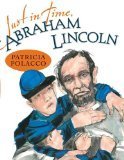

When Michael and Derek visit Harpers Ferry with their grandmother, they have no idea the kind of "game" they will be invited to play. The mysterious museum director tells them they can walk through a door, and before they know it they have walked straight into 1862.
Lesson Idea:
Historical Fiction:
Mentor Texts: Read aloud Just in Time, Abraham Lincoln as part of a unit on historical fiction or as part of a unit on the Civil War. If you are teaching a unit on historical fiction, choose several picture books and have students analyze the setting of the stories. Why is the setting important in historical fiction?
as part of a unit on historical fiction or as part of a unit on the Civil War. If you are teaching a unit on historical fiction, choose several picture books and have students analyze the setting of the stories. Why is the setting important in historical fiction?
A great book to tie into a Civil War unit is Henry's Freedom Box.
Note: Polacco's books, Pink and Say and January's Sparrow would also work nicely with a unit on the Civil War.
and January's Sparrow would also work nicely with a unit on the Civil War.
©2012 by Dawn Little for Picture This! Teaching with Picture Books. All Amazon links are affiliate links and may result in my receiving a small commission. This is at no additional cost to you.
Filed under: Abraham Lincoln, Civil War, Content Connections, Just in Time Abraham Lincoln, teaching with picture books Tagged: civil war, content connections, historical fiction, Just in Time Abraham Lincoln, setting








February 13, 2012
Martin's Big Words: The Life of Dr. Martin Luther King, Jr. by Doreen Rappaport
Recommended Grades: 3-5
A biography of Martin Luther King, Jr. using his own words to showcase the information in the text.
Writing Workshop:
Mentor Texts: Read aloud Martin's Big Words: The Life of Dr. Martin Luther King, Jr. as part of a unit on biographies, during Black History Month (February), or a unit on writing dialogue. Ask students to replicate the style the author used by researching a person from history and writing a short biography of that person. Ask students to find quotes from the person they are researching to use in their biography. Model for students how to use the quotes to showcase the information about the person. Other mentor texts that use quotes are Pop! The Invention of Bubble Gum and Imogene's Last Stand. Read aloud all three texts as mentor texts so students have an understanding of how the authors used the quotes to showcase their informative text.
as part of a unit on biographies, during Black History Month (February), or a unit on writing dialogue. Ask students to replicate the style the author used by researching a person from history and writing a short biography of that person. Ask students to find quotes from the person they are researching to use in their biography. Model for students how to use the quotes to showcase the information about the person. Other mentor texts that use quotes are Pop! The Invention of Bubble Gum and Imogene's Last Stand. Read aloud all three texts as mentor texts so students have an understanding of how the authors used the quotes to showcase their informative text.
©2012 by Dawn Little for Picture This! Teaching with Picture Books. All Amazon links are affiliate links and may result in my receiving a small commission. This is at no additional cost to you.
Filed under: Martin's Big Words, nonfiction, nonfiction writing, teaching with picture books, writers workshop Tagged: biographies, Martin's Big Words, mentor texts, writers workshop









